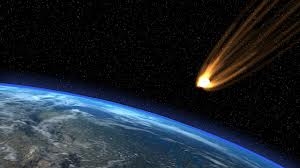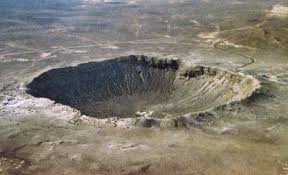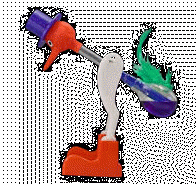|
Asteroids, Comets and
NEOs
Objectives:
| • Know that asteroids, comets and NEOs can be
found in our solar system • Be able to
describe the similarities and differences in the composition and
orbit of asteroids and comets.
• Know that it is important to track the
orbital path of NEOs, and describe strategies that could be
employed to avoid collisions with Earth.
|
 |
| Task 1 - Starter
Find someone who knows... |
 |
|
▪ The names of
the planets in our solar system - in order!
▪ Where we find
most of the asteroids in our solar system
▪ TWO differences
between the orbit of a planet, and the orbit of a comet. |
Task 2 - Video clip
|
Watch this short
video, which explains what can happen when a large
astronomical body collides with the Earth. Listen
carefully for strategies we could use to avoid these
impacts.
Direct link:
http://youtu.be/CdYgBHzbwn0
|
Task 3 -
Researching asteroids, comets and NEOs:
| You are going to complete a research task
to find out more about asteroids and comets. Present your
findings as a poster or a leaflet. |
 |
|
Your leaflet or poster should include
details of the following:
1. What is an asteroid? Where do we find
most asteroids? Describe the orbit of a typical asteroid.
2. What happens when an asteroid collides
with Earth?
3. Where on Earth can we see evidence of
large asteroid impacts?
4. What is a comet? How is the shape and
orbital speed of a comet different to that of an asteroid?
5. Why do we need to study the path of
asteroids & comets? What is an NEO? What could we do
if an object was a danger to the Earth? |
Your teacher will provide you
with textbooks, including the "OCR Gateway Science" textbooks (orange
book, p240-243). You can also use web based resources to help you
find out more; The website
www.nearearthobjects.co.uk has some
excellent information about NEOs.
Teacher note: the above research prompts are available to download as a
powerpoint presentation,
if you prefer.
Task 4
Blurb
|
Heading:
Activity details
|
Task 4
Blurb
|
Heading:
Activity details
|
Homework/Extension
A
--------------------------------------------------------------------------------------------------------------------------------------------------------------------------------------------------------------
Formula:
|
a
= b × c ÷ d
|
a =
____, measured in ______ (unit
notation).
b = ____, measured
in ______ (unit notation).
c = ____,
measured in ______ (unit notation). |
Teacher note:
The extension / MAT work is available
(here - insert hyperlink) as a word document.
|

